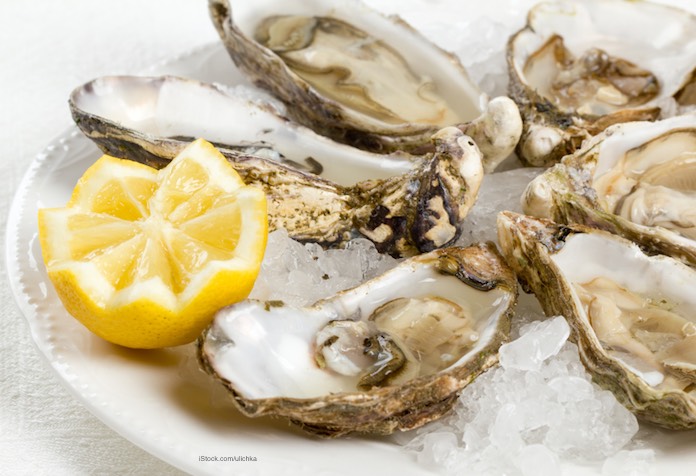
One of the most common illnesses linked to raw oysters is vibriosis. This infection is caused by the Vibrio vulnificus or the Vibrio parahaemolyticus bacteria that occur naturally in seawater. Oysters are filter eaters, which means they draw in seawater and filter out the food and bacteria. The bacteria then become concentrated in the oysters flesh.
Most Vibrio infections are caused by Vibrio parahaemolyticus. This illness causes diarrhea and vomiting, and most people recover without medical treatment. But Vibrio vulnificus can cause a serious infection that can lead to sepsis and even amputation if the infection is through a wound. One of three people sickened with a Vibrio vulnificus infection die.
Vibriosis causes about 80,000 illnesses and 100 deaths in this country every year. Most of these illnesses occur in May through October, when the water temperatures are warm. But you can get sick from eating raw or undercooked oysters any time of the year.
Vibrio bacteria cause illness two ways. You can either ingest the bacteria through contaminated food, or it can enter your body through a wound or a scrape. That’s why food safety advocates tell people to be careful when handling raw seafood, especially oysters. If you have wounds on your hands or fingers, do not touch raw seafood unless you are wearing gloves.
Unfortunately, a contaminated oyster does not look, smell, or taste different from one that is safe to eat. The only way to kill the Vibrio bacteria is to cook it and cook it thoroughly. Lemon juice and hot sauce do not kill this bacteria.
To cook oysters so they are safe, first examine each oyster. Discard any with open shells or shells that don’t close when you tap on them; that means the oyster is dead. Boil oysters in the shell until the shells open, then continue boiling for 3 to 5 minutes longer. Or you can steam the oysters in the shell until the shells open, and continue steaming for 4 to 9 minutes longer.
Then, only eat oysters that open during cooking. Discard any oysters that do not open fully after cooking.
If you are preparing shucked oysters, boil them for at least 3 minutes or until the edges curl, fry for at least 3 minutes at 375°F, or broil them 3″ from the heat for 3 minutes. You can also bake the oysters at 450°F for 10 minutes.
Make sure that you separate raw seafood from cooked, and do not let juices from raw seafood contaminate food that is eaten raw. Wash your hands well with soap and water after handling raw seafood.
The symptoms of vibriosis cause watery diarrhea, usually with abdominal cramps, nausea, vomiting, ever, and chills. Symptoms usually begin within 24 hours of exposure to the bacteria. People who have liver disease, cancer, diabetes, HIV, or thalassemia can get very sick if they contract this infection. In additional people who are receiving immune-suppressing therapy, take medicine to lower stomach acids, or have had recent stomach surgery are also more likely to develop a serious illness. the symptoms of a skin infection include a new infection, swelling, fever, and chills.





